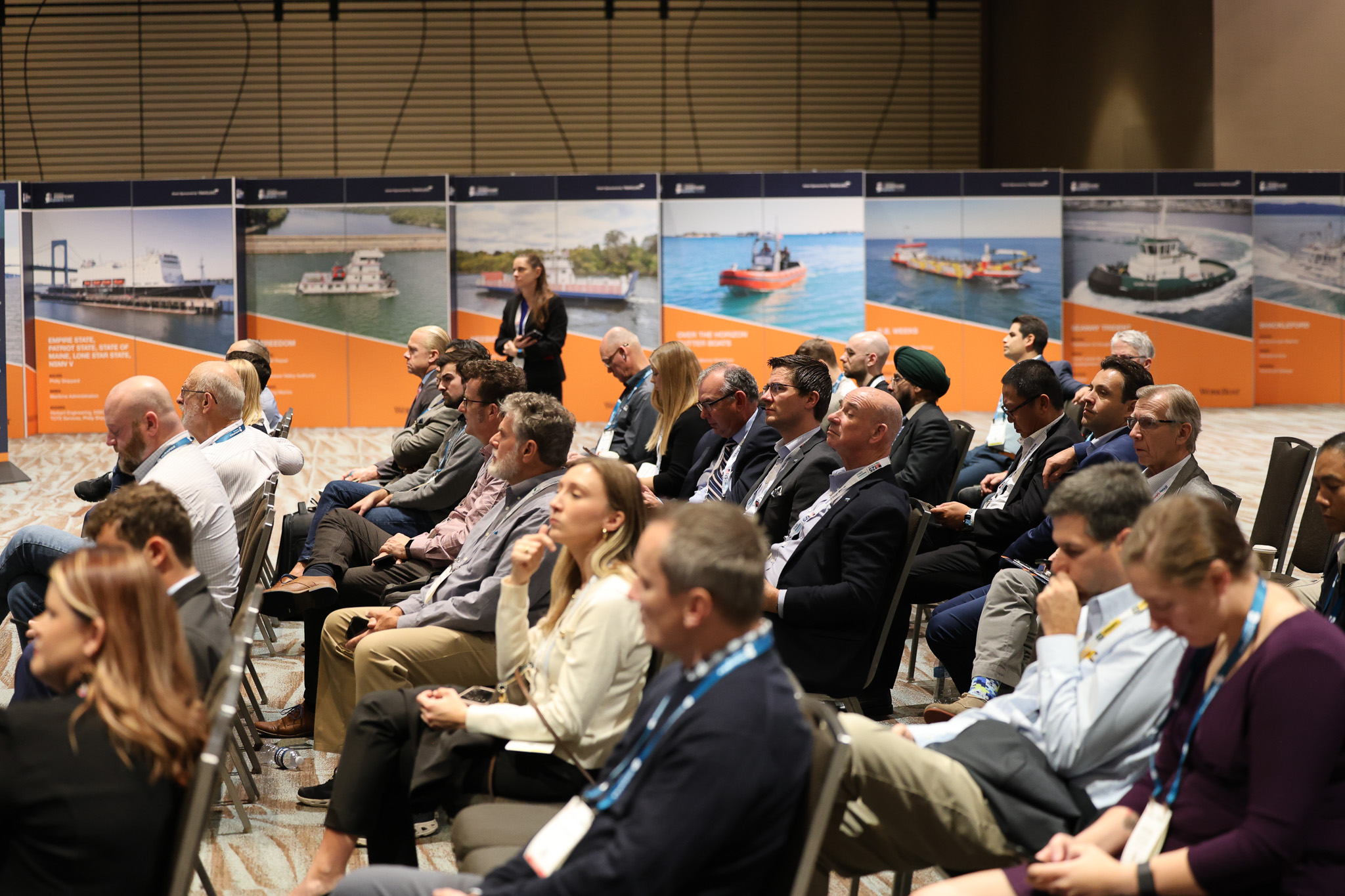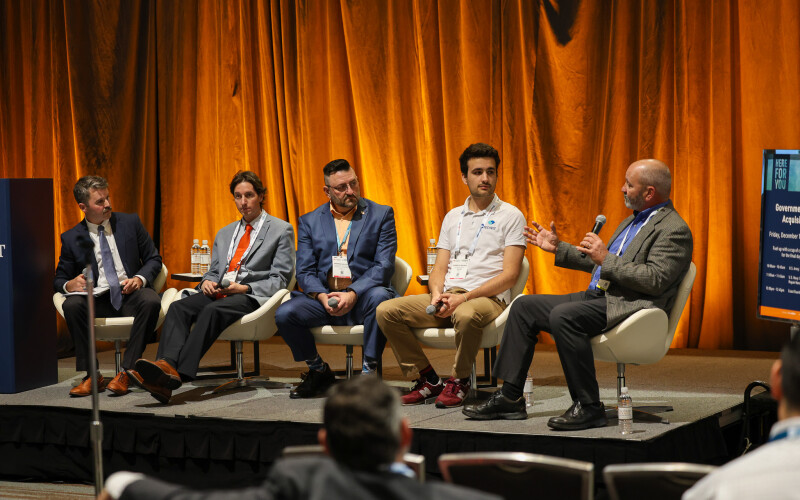The leaps forward in engineering enabled by three-dimensional computer assisted design (3D CAD) continue to evolve. Designers who can simulate an imagined vessel’s detailed performance can now extend the technology to help customers completely through the construction, operations, and lifespan maintenance of ships.
“When you look at when we started back in the 1990s, we were drawing everything. You were given an idea of what the ship should look like,” said Michael Mazzenga, business development marine for Siemens, during a panel discussion Wednesday at the International WorkBoat Show in New Orleans.
“When the ship was done, it looked like the drawing, but the accuracy wasn’t there,” he added. “Three-D CAD really revolutionized everything.” The graphic design systems allowed designers to break down packages and systems, facilitating modular construction and greater shipyard efficiency.
Today digital twins (or DT), visual representations of ships with all their systems, play a vital role from early design stages, with upfront testing of likely vessel performance and proof of concepts through operations and maintenance.
Digital twins allow designers to design the right vessel for customer needs, down to simulating generator power needs thruster operation for dynamic positioning and power configurations, said Luca Pivano principal specialist for DP (dynamic positioning) simulations control systems and cybernetics advisory with DNV.
“On the design side, this is often used for right-sizing,” said Pivano. DNV is working often on service operations vessel (SOV) designs for the offshore wind industry, including configurations with gangways for so-called “walk to work” transfers of technicians to wind turbines.
Digital twins allow “system simulation” of those transfer operations, including the SOV, gangway, the receiving portal, and sea conditions, including vessel roll, said Pivano.
Panel moderator Ben Hayden of WorkBoat asked the panelists how customers’ questions about disrupting established processes or return on investment might affect their views of adopting new digital design technology.
“You need to convince all the stakeholders of the value you are offering,” said Pivano. Changing priorities in the marketplace are a factor, he added: reducing emissions is a growing concern of maritime customers, as is reducing fuel use.
“Fuel consumption is more and more into the contracts,” he said.
“You have to have a champion at the facility (shipyard) who says, ‘Hey, this can save us money,’” said Darren Guillory, technical solutions specialist SSI, whose ShipConstructor program is widely used.
Guillory recalled an example of working with the U.S. Navy to use robotic welding – a project that raised fears of job displacement. But the use of robotic technology for routine work on panel line welding for example frees up skilled workers to better work on the waterfront, he said.
“It speeds up your build, it augments your build, and that’s where you get your return on investment,” he said.
Environmental changes and related demands on the shipbuilding industry will continue to drive those trends, said Mazzenga.
“The rules of the game are changing, so we have to adapt,” said Pivano.
There's a generational change too in the shipbuilding and mariner workforce, Guillory noted. Younger workers who face design and performance problems with their vessels want the latest technology for troubleshooting, he said.
“If you don’t have that visualization, you can’t just send them a drawing,” said Guillory. “You have to adopt this technology, or you get left behind.”





